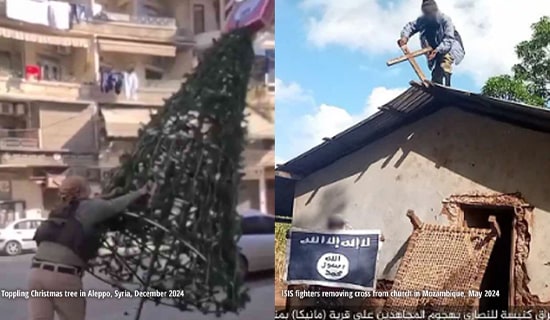Introduction
On December 2, 2017, the Syrian opposition website Zamanalwsl.net published the findings of a study on foreign forces' military airbases in Syria, including information on their location, what countries they belong to, what they are used for, and what their capabilities are, along with satellite photos of the bases. The website noted that the research was carried out "by knowledgeable military experts" but did not identify them further, and added that its publishing of it was exclusive. It should be noted that since it is not known who authored the study, MEMRI is unable to assess its credibility.
Also on December 2, the website published, on its YouTube channel, a four-minute video[1] titled "Who Do the Dozens of Foreign Bases in Syria Belong to, and Where Are They Located?" The video provides a map of Syria with the locations of the foreign bases and airfields marked according to national affiliation, but the video shows additional bases not mentioned in the study published on the website.
Two weeks later, on December 18, Zamanalwsl.net posted a report on another base, a large American one in the city of Al-Shadadi in Syria. Like the first report, it included numerous satellite photos of the base.[2]
On December 19, 2017, the Saudi-based Arabian Gulf Centre for Iranian Studies (AGCIS) also published a map of bases; this one showed 29 foreign military bases in Syria. It included almost the same bases that were mentioned by the Zamanalwsl.net publications. According to the December 19 map, the Americans have an additional base in northern Al-Raqqa province in Tal 'Abyad, on the Syria-Turkey border.[3]

Map of foreign military bases in Syria published by AGCIS (Source: Twitter.com/arabiangcis, December 19, 2017.
This report reviews the findings of the studies as presented by Zamanalwsl.net.
Zamanalwsl.net Publishes Comprehensive Study On Foreign Airbases In Syria
The report published December 2, 2017 by Zamanalwsl.net stated: "It has been seven years since the beginning of the war in Syria... which within a short time moved beyond its local level and its [original] pattern of operation, and Syrian soil became an arena of struggle and clashes between regional and international forces... including a long list of countries, armies, militias, and foreigners from all corners of the earth.
"This [foreign] involvement, that began on the intelligence level, very quickly became direct intervention, and the 'special forces' turned into military bases with landing platforms and living quarters in buildings that are not temporary or transient.
"Zamanalwsl.net has obtained, exclusively, a study carried out by knowledgeable military experts on these [foreign] military airbases, what countries they belong to, their distribution [on Syrian soil], their locations, their military quality, and their logistical capabilities, [as detailed below]. The study was limited to airbases, out of the great many foreign military bases on Syrian soil.
"Russian Bases
"The Russian forces that joined the Syrian war in support of the regime began their military activity from the airports [already] in operation [in Syria] and carried out most of their activity at the Hama and Al-Mezzeh airports, and at the Al-Shayrat and Al-Daba'a airports in the rural area of Homs. This was before they began to establish military bases [of their own] – the most prominent of which is the Khmeimim airbase, that appears to be set to remain a permanent Russian base, according to statements by Russian officials. One of these statements came from Russian Federation Council Defense and Security Committee chairman Viktor Bondarev, who on November 25, 2017 told the [Russian news] agency Sputnik that Russia had decided to keep its military bases at Khmeimim and Tartus, Syria, at the end of what it called 'the war on terrorism.'
"Khmeimim airport is considered the operational command of the Russian forces operating in Syria, after an agreement was signed in 2015 giving Russia the right to use the airport at no cost for an unlimited time. Following this agreement, the Khmeimim airport was expanded, rebuilt, and maintained at a cost of thousands of dollars [sic] in order to transform it into a fully equipped military airbase.
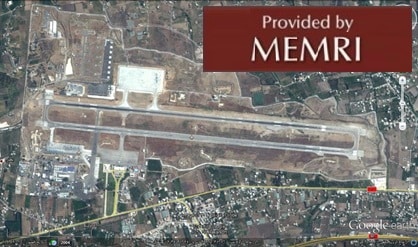
"According to the study, after the [Syrian] regime forces were prevented from entering Khmeimim airport, they build alternatives to it. [To this end,] the Al-Hamidiya agricultural airfield, south of Tartus, was rebuilt, in order to prepare it to take civilian aircraft and so that it could be used for military aircraft when necessary.
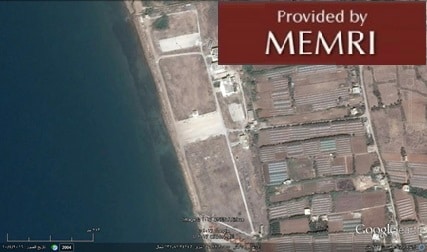
"Also established was a helicopter landing platform in Istamo [in Al-Latakia governorate] for the 618th Naval Squadron... and now it is home to a group [of helicopters] from the transport squadron of the 59th Brigade and to a group of Orlan-10 intelligence drones that the [Syrian] regime received from Russia.

"Menagh airport [north of Aleppo] was not long ago handed over to the Russian forces by the Kurdish forces [who took it over in February 2016 after it was held by the rebels and also by the Islamic State (ISIS)], and the Russian flag was flown above it, in an unprecedented move, in order to prevent the Turks and opposition forces from entering it. It appears that the Russian presence there is not temporary.

"Palmyra airport: After ISIS withdrew from Palmyra airport, the Russian forces transformed it into a military and air base for them, in the depth of the Syrian desert, and it serves as a base for helicopters and intelligence drones. Within it was established an advanced base for listening to and disrupting [enemy communications]. There is information that the Russian forces are using Palmyra airport for smuggling many archeological artifacts looted from the city of Palmyra and other areas.
"According to the study, [Syrian] regime forces are still situated in the [Palmyra] airport, including a squadron of L-39 aircraft and the 64th Brigade Mi-25 helicopter fire-support unit.

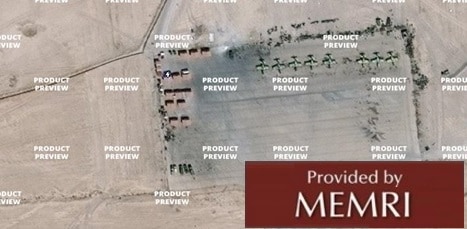

"It should be noted that the news agencies have in the past reported that Syria has begun building a new military base in the town of Khirbat Ras Al-Wa'er, next to Bir Qassab, east of Damascus.
"Iranian Bases
"Iran was [involved] in the Syrian war from an early stage, with direct forces or by means of mercenaries. It is hard to define particular locations where these forces and militias are, since their number, presence, and equipment have surpassed that of the [Syrian] regime army itself.
"The study points out several bases of Iranian forces and militias, as given below:
"Deir Al-Zor airport: After the Syrian regime expelled [the ISIS forces] that were besieging the airport this year, Iranian forces, Hizbullah forces, and Shi'ite militias set themselves up in it. So did an Air Academy L-9 aircraft unit – once all the 24th Brigade training aircraft were no longer serviceable – and the 17th Squadron, of Mi-8 transport helicopters..

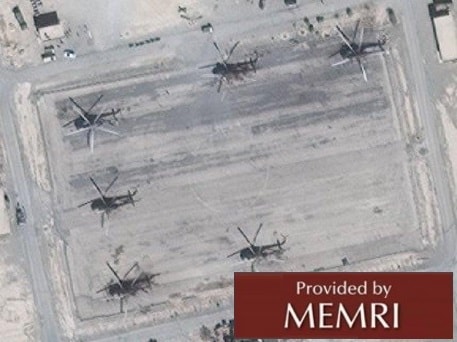
"Helicopter landing pad in [the city of] Al-Safira [25 km southeast of Aleppo]:
"This landing pad was built by the Iranian forces concentrated at the Al-Safira plants in Aleppo [governorate], for transporting equipment, explosives, ammunition, and explosive barrels manufactured there. Stationed at the landing pad are: a unit of Mi-8 transport helicopters, for transporting equipment; a unit of Gazelle helicopters for transporting the commanders; and a unit of drones under Iranian command.

"South Al-Raqqa landing pad
"During its battles in the rural area south of Al-Raqqa, the [Syrian] regime built a helicopter landing pad east of Al-Raqqa's southern road, enabling helicopters to land there to provide the forces and militias cooperating with it with various types of aid. Likewise, the landing pad has two Iranian-made intelligence drones, along with their command and control systems.

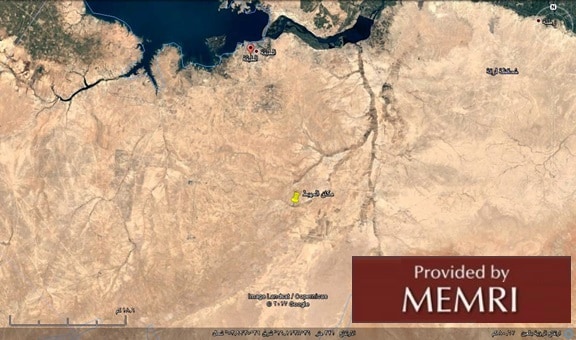
"Al-Daba'a [village] military airport [near the city of Al-Qusayr, Homs governorate]
"Before the rebel activity began, there was no regime aircraft at Al-Daba'a. After Hizbullah and the Shi'ite forces took over the Al-Qusayr region, Hizbullah transformed this airport into a military base, and concentrated its men in the airplane hangars and their surroundings, on the western side of the airport. Hizbullah uses this airport for launching drones. Likewise, Iranian aircraft have been seen landing there at infrequent intervals.
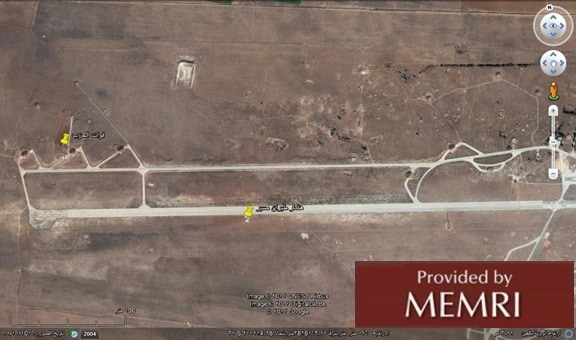
"Base at Khirbat Al-Ward [a village in the central rural area of Damascus]
"After the Shi'ite militias took over the Set Zaynab region [in the rural area of Damascus] and its surroundings, these militias set up the Khirbat Al-Ward airfield as their residence. They rebuilt some of it and made it usable for drone launches and landings, and they are still using it today.

"American Bases
"The American military presence [in Syria] is no longer a secret, after its open aid to the Kurdish forces in northern and eastern Syria, under the headline of the war on terrorism. Likewise, the American presence is no longer relying just on special forces and experts, but now requires military bases; it is assessed that some of these will be permanent.
"Airfield in Rmeilan [a village in Al-Hasaka governorate, northeastern Syria]
"[This is] an old agricultural airfield that the American forces rebuilt, walled off, and changed into a landing strip for helicopters, drones, and transport aircraft (the runway is 1,400 meters long). It is considered an important landing strip for the American forces because of its proximity to the most important oil fields in the region, which are controlled by the Kurdish Popular Defense Units [YPG]. At this time, a few transport planes carrying aid to the Syrian Democratic Forces [SDF, incorporating mostly Kurdish forces headed by the PYD party and Arab forces fighting ISIS that are supported by the U.S.] land there.

"Landing strip in Al-Malkiya [is a Syrian town in Al-Hasaka governorate]
"[This landing strip] is situated southwest of the city of Al-Malkiya, and it too, like the Al-Rmeilan landing strip, was rebuilt by the Americans for the same purpose. The Americans carried out comprehensive maintenance work and extended the strip from 750 meters to 1,250 meters, so that it is now suitable for takeoffs and landing for all types of aircraft.
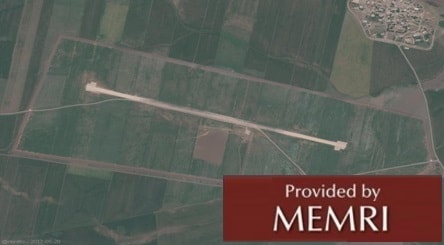
"The largest American military base [situated north of the city of Al-Tabaqa]
"In early 2017, the U.S. began preparing a giant military base north of [the city of] Al-Tabaqa [in Al-Raqqa governorate], some 90 km north of the town of Surin [in Aleppo governorate] near the villages of Sabt Al-Fuqani and Sabt Al-Tahtani. This base is the most important of all the American bases in northern Syria, because its construction plan indicates, apparently, that it will be a permanent base, not a temporary one. Likewise, the Americans have already begun to build a landing strip for airplanes nearby, on unused agricultural land.

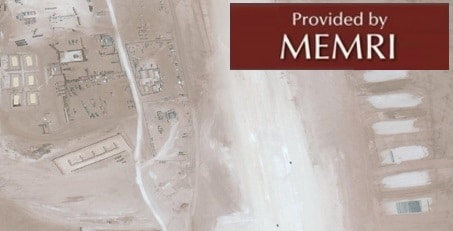


"[The American base] between Tal Baydar and Tal Tamer [in Al-Hasaka governorate]
"[This base] is thought to be one of the biggest American bases in northern Syria. A long runway for planes was built in it, and it is almost certainly ready for operation now, because several large transport planes were seen landing at it.


"Tal Baydar base
"At [this base], a small, 360-meter landing strip for airplanes and helicopters was built, near the grain silos of Tal Baydar, which serves the large American base at Tal Baydar. This landing strip is equipped with new battle equipment in addition to other military equipment.


"The French are at Lafarge [Factory; Lafarge is a global French concrete concern]
"Inside the Lafarge concrete factory in the northern rural area of Al-Raqqa, a landing pad was built, to serve the French and American forces for supplying equipment and ammunition to the SDF.
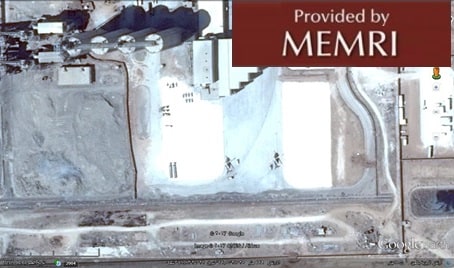
"The British base at Al-Tanaf [a Syrian town in the Palmyra region, Homs governorate]
"The British forces also have a role; they build a British military and air base in the Al-Tanaf region, near the Syria-Iraq-Jordan border junction, that includes a command, control and information gathering system. Likewise, they set up groups of drones [there], to carry out their missions within Syrian territory.

"The study stopped when it got to the Turkish forces, which have also entered Syrian territory, but no airbases belonging to them have yet been identified. Possibly they have no need for them, because the Turkish border is close to the Syrian arena of conflict.
"The study concluded by stating that the military bases and airfields belonging to the [Syrian] regime had become bases for their various allies, for both land and air operations, and for technical, logistical and operational aid."[4]
Video Posted On Zamanalwsl.net Shows Many Additional Bases In Syria
A video posted by Zamanalwsl.net on YouTube on December 2, 2017 presents additional military bases and airfields:
Iranian bases:
Base in Damascus International Airport; Jabal 'Azzan base (in the southern rural area of Aleppo); Set Zaynab base (in the rural area of Damascus); Al-Kiswa base (south of Damascus); Al-Sin airbase (in the rural area of Damascus).
Hizbullah bases:
Al-Qusayr base (in Homs governorate, on the Lebanese border); Al-Zabadani base (in the rural area of Damascus in southwestern Syria, near the Lebanese border); base in Jabal Al-Qalamoun (a mountain range northeast of Damascus, along the Lebanese border); base south of Saraghaya (near Al-Zabadani, north of Damascus).
American bases:
Surin base (north of Aleppo, on Turkish border); Kharab Al-'Ashiq base (in the northern rural area pf Al-Raqqa); Ayn 'Issa base (in Al-Raqqa governorate; houses French troops as well); Al-Mabrouka base (in the rural area of Al-Hasaka); Al-Ruyarya base (in the northern rural area of Aleppo); Al-Zakf base (near the Syria-Iraq-Jordan border junction), Ayn Dadat base (in the norther Aleppo governorate).
French bases:
Base under construction in Ayn Al-'Arab (aka Kobane, in Aleppo governorate)
German Bases:
International base in Al-Tanaf; base under construction in Rmeilan.
Russian bases:
Base in Tartus harbor; naval academy in Jabla (coastal town south of Latakia); base and airfield in Jandaris (in Aleppo governorate); Al-Qamishli base (in northeastern Syria, on the Turkish border); Khirbat Ras Al-Wa'er base (east of Damascus).
Turkish bases:
Jarabulus base (in Damascus governorate); A'zaz base (in Damascus governorate); Akhtarin base (in Aleppo governorate).
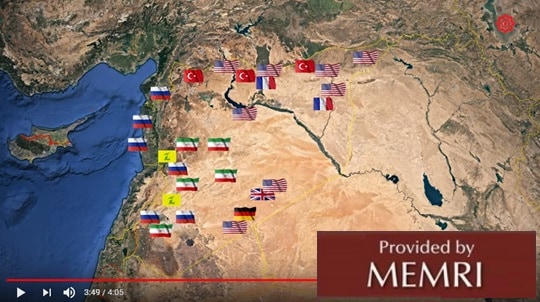
Map presented in the video: foreign bases in Syria
Another Report On Zamanalwsl.net Exposes Large American Base In Al-Shadadi
As stated, a second report on Zamanalwsl.net exposes anther American base in Syria, in the city of Al-Shadadi.

The report, posted on December 18, 2017, states: "As part of exposing the military bases of the foreign forces on Syrian soil, it has been firmly established that the American forces have built a base containing a landing pad for helicopters on the outskirts of Al-Shadadi in the southern Al-Hasaka [governorate]. The location of this base,... inferable from the photos, indicates that it is meant to defend the Al-Jabsa Oil [Fields] Administration and the oil fields in the Al-Shadadi [area].
"American forces, then, are now stationed near two important oil fields in northeastern Syria: Rmeilan and Al-Shadadi. Observers believe that this leaves the Syrian regime and its allies with no chance of recapturing these oil fields, which are controlled by Kurdish forces.
"Mahmoud Ibrahim Al-Muayid, head of the research unit at the [Turkey-based] Barq Research and Studies center, claimed that, to judge from the pictures, this is not a base in the classic sense of the term, but a post intended to establish a mechanism to oversee the production of gas and to defend the gas pipelines. The helicopters, he said, are intended to enable quick intervention against terror [attacks], looting and sabotage of the pipes and facilities operating in the area. [He added that], thanks to these capabilities, [the base] is considered a ground operations base with air landing capabilities.

Since several days ago, this military base has included, in addition to the helicopter landing pads, also a facility for urban warfare training and a small operations room with at least eight helicopters. In September [2017], 12 American troops were wounded at this base when a helicopter made a bad landing and crashed. It should be noted that the American forces, which have several airfields and military bases in the Al-Hasaka governorate, rely mostly on paid troops to fight the 'Islamic' organizations [that operate] in the Arab [countries] of Syria and Iraq, especially ISIS, and make sure to give [these forces] a tribal character."[5]


